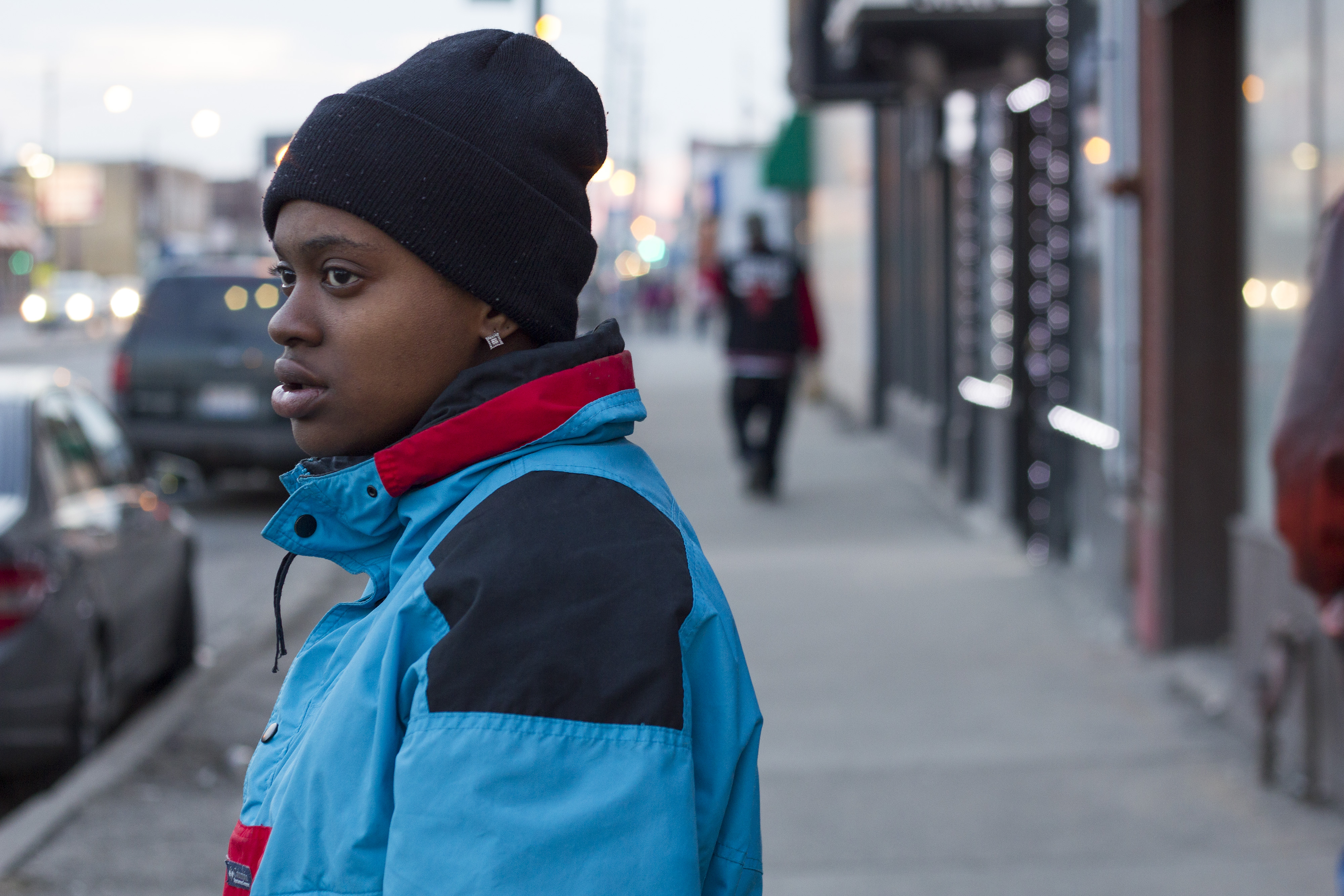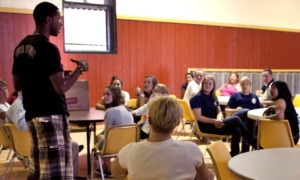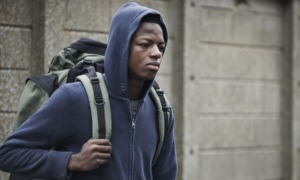Think being a teenager was tough? Imagine going through that period without a steady roof over your head.
That’s the tale that unfolds in “The Homestretch,” a new documentary that examines the lives of three Chicago teens struggling to get a high school education while in what school administrators euphemistically call “temporary living situations.” Roque, Anthony and Kasey were among the more than 19,000 homeless students in the city’s public schools and an estimated 1.2 million homeless youth nationwide — a figure many advocates say is probably an undercount.
“We don’t support homeless youth with anything near the amount of resources we need to, publicly or privately,” co-director/producer Anne de Mare said. “What we are talking about, essentially, are children who don’t have anyone to care for them.”
Viewers meet Roque, 17 then and now 20 in real life, as he’s living in a teacher’s basement and studying “Hamlet.” He’s undocumented, his father decamped after a “huge problem with immigration” and his mother had no place for him in her new home when she remarried, so he identifies with the Dane.
Anthony, 18, grew up in foster homes before being taken in by a half-sister’s father, whom he fled after being beaten. He was arrested after stealing to survive and put on probation before being put in an independent living program for teens. He is now 23.
Kasey’s mother put her out after learning her daughter, then 19, was a lesbian, but she found a spot in the same program and continued pursuing a diploma. Kasey is now 24.
“We didn’t want to make a film about how awful it was to be homeless,” de Mare said. “What we wanted to do was make a film about young people who found themselves in that situation and show the struggle, how much it takes to get out of that situation … so that you can get a real picture of how do we solve this as a society.”
Under federal law, every school district has to have someone on staff to find ways to keep homeless kids in class. In Chicago, there’s a homeless coordinator in every school — a school clerk, nurse or counselor who’s taking on those additional duties without pay.
Marcellus Summers, who oversees programs for homeless students in more than 200 South Side schools, said the district waives fees and provides uniforms, transportation, medical and food assistance to keep those children in school. Most are what Summers calls “doubled up” — staying with relatives or friends on a temporary basis, for a variety of reasons.
“Most of the time, it’s financial, or a parent’s incarcerated, a child is in an unsafe environment, especially in my area,” Summers said. “There’s domestic violence, a parent can flee from their home, or just violence — regular violence that goes on here in the city of Chicago, where a child doesn’t feel safe staying in the neighborhood where their parents live.”
Somewhere between 80 to 90 percent of Chicago’s homeless public school pupils are doubled up, Summers said. The rest are identified as “unaccompanied” youth who find refuge in shelters, in cars or vacant buildings or, in some cases, on the streets.
Transportation is the system’s biggest expense. Summers said the district tries to keep children in the same schools they attended before becoming homeless, providing bus transportation to students in pre-kindergarten through sixth grade and transit passes for older kids.
The numbers jumped sharply in the steep recession of 2007-09 and have continued to rise since the official end of the slump, Summers said. But some of the increase may be due to more people, both children and adults, being aware the programs exist, he said.
De Mare and co-producer/director Kirsten Kelly shot the documentary between 2010 and 2013. During that period, Roque’s teacher shepherds him through high school and into college; Anthony completes a GED and gets an information-technology internship at a Chicago hospital; and Kasey has a tentative reconciliation with her family while living in a shelter that trains teens to become independent.
Trailer for “The Homeless Stretch”
“It’s challenging, and I think their lives will continue to be challenging,” de Mare said. “But I think they are all fully engaged in building a future. I have a lot of faith in those three.”
Happy endings for them, to be sure. But the third-largest U.S. city has an estimated homeless population of 138,000, said Beth Cunningham, of the Chicago Coalition for the Homeless. More than 12,000 of those are believed to be unaccompanied youth between 14 and 21, but the number is hard to calculate, she said.
“They might fear reaching out for assistance or making themselves known for fear of getting in trouble, or having to go into the child welfare system for whatever reason,” Cunningham said.
And money to support the kind of programs that would give those kids a place to stay is uncertain. A 20-bed youth shelter featured in the documentary, known as “The Crib,” rarely had enough beds for the teens who sought refuge there. In one of the heart-tugging scenes captured by the filmmakers, it had to close temporarily after its city pilot funding ran out.
The Crib — run by a Lutheran church a few blocks from Wrigley Field — is back open after securing permanent funding from the city. De Mare called it “an exceptional organization” that now operates year-round and is being used as a model for other shelters around Chicago.
But homeless advocates are now fighting a new round of proposed cuts to state programs, Cunningham said. Chicago Mayor Rahm Emanuel’s administration allocated $2 million to keep shelters like The Crib open, but newly elected Illinois Gov. Bruce Rauner’s proposed budget would cut funding for homeless youth services by about 55 percent, she said.
“We definitely saw numbers increase during the recession,” Cunningham said. “But as the economy has improved here in Chicago, we really haven’t seen a decrease. It’s a reflection of the lack of affordable housing for people. I think it can still be a reflection of a lack of jobs paying a living wage. It’s still very much an issue, and a problem that needs to be addressed, especially among homeless youth.”
“The Homestretch” is scheduled to air April 13 on the PBS program “Independent Lens” and recently had a screening in Washington for federal officials who deal with the issue. Among them was Jasmine Hayes, the policy director for the U.S. Interagency Council on Homelessness.
“It just affirms our view that ending youth homelessness is not something that can be achieved just through one system or one program alone,” Hayes said. “It really is about a collective response, and that is a collective response that includes government and community-based organizations and the private sector.”
At the federal level, the Obama administration has ramped up funding for homeless assistance since taking office as the economy plunged. Its 2016 budget request includes nearly $5.5 billion to address the problem, and it has set a goal to end child homelessness by 2020. But efforts hit a snag last year when Congress failed to approve a $300 million request for permanent housing to end chronic homelessness.
“The one thing that everyone on that panel agreed on was that there were not enough resources,” de Mare said. While government can’t solve every facet of the problem, “until we get more political pressure on the situation and until we make more noise as a society that we have to face this, I don’t think that we’re going to be able to solve this problem.”
































